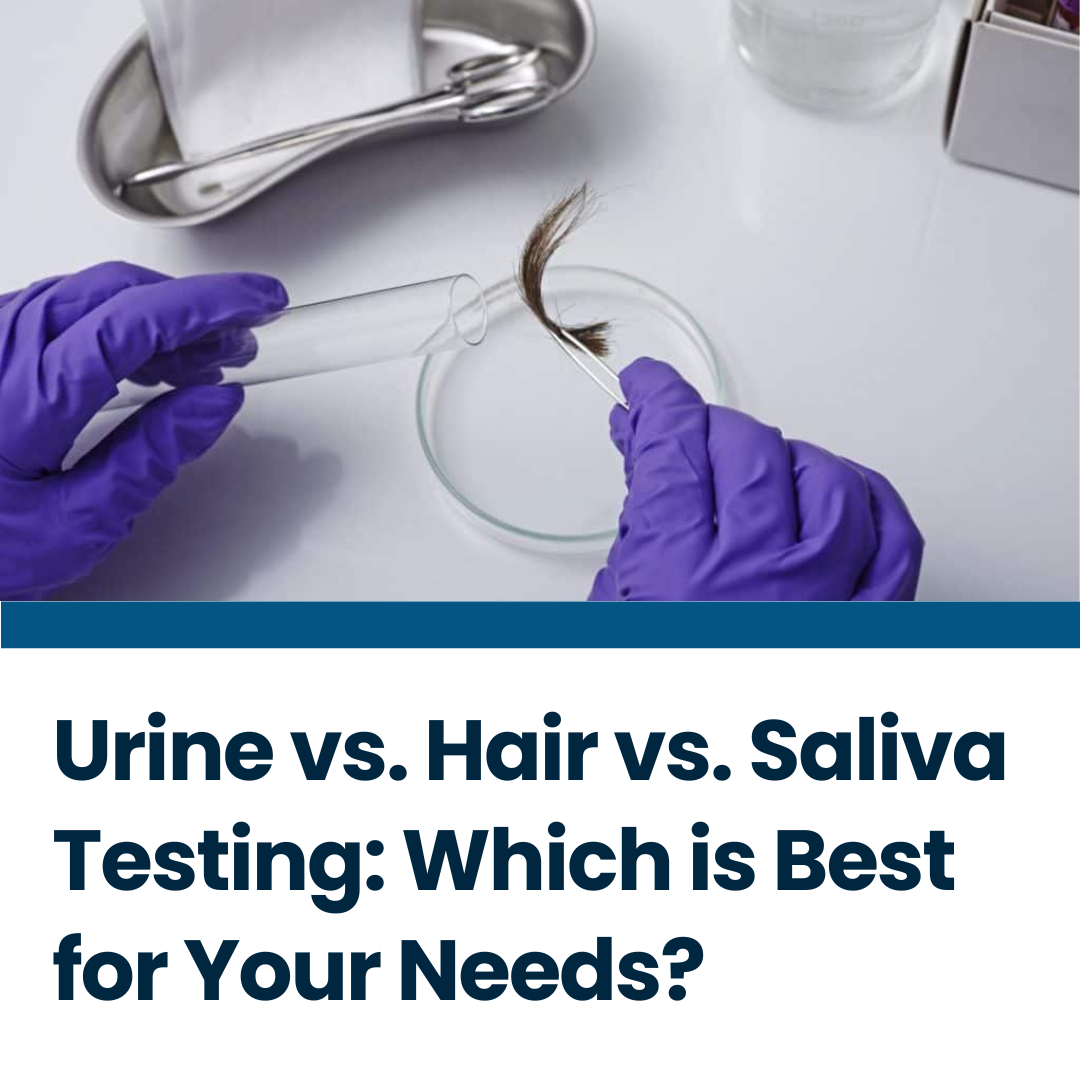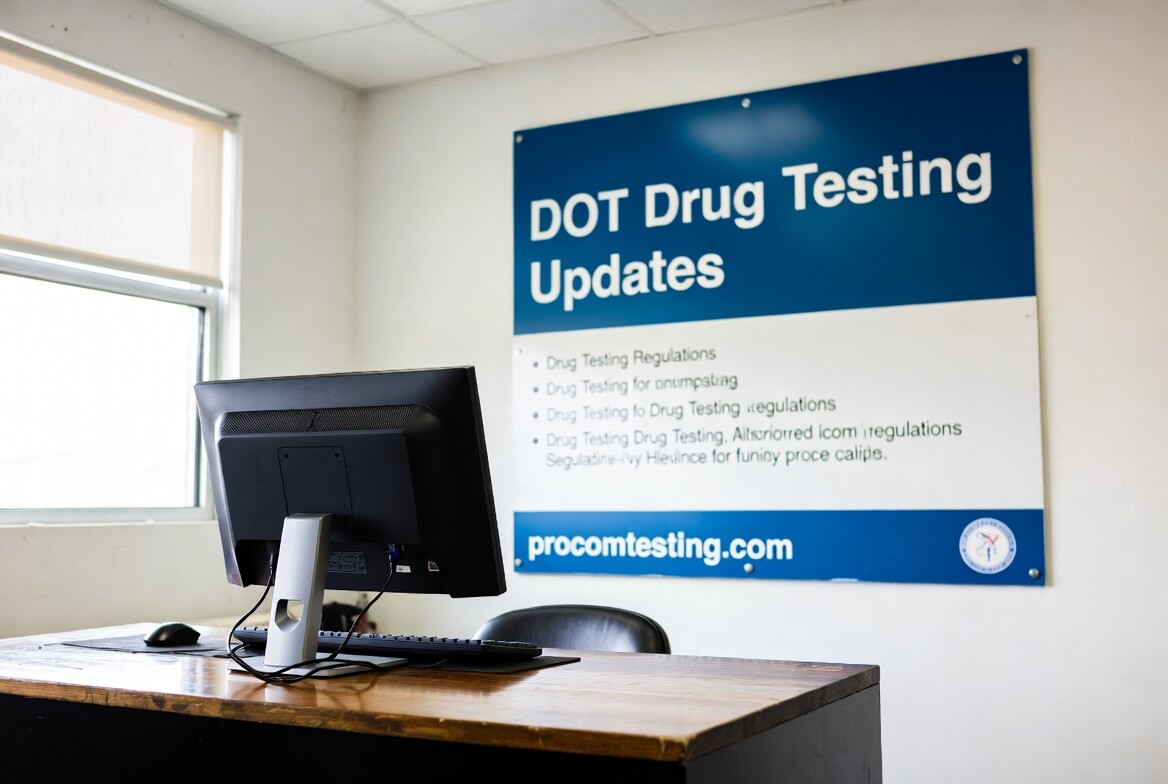When it comes to drug testing, choosing the right method is crucial for accuracy, efficiency, and compliance. Urine, hair, and saliva tests each have their own strengths and limitations. Whether you’re an employer, a healthcare provider, or an individual preparing for a test, understanding these differences can help you make an informed decision.
1. Urine Drug Testing: The Most Common Choice
How It Works:
Urine drug testing is the most widely used method due to its cost-effectiveness and broad detection capabilities. A urine sample is collected and analyzed for the presence of drug metabolites.
Pros:
✅ Detects recent drug use (typically within the past few days)
✅ Cost-effective and widely available
✅ Easy to administer with instant and lab-based options
✅ Approved by the Department of Transportation (DOT) and other regulatory bodies
Cons:
❌ Shorter detection window compared to hair testing
❌ Can be tampered with or adulterated
❌ Collection may feel invasive for some individuals
Best For:
✔ Pre-employment screenings
✔ Random workplace drug testing
✔ Legal and compliance requirements (e.g., DOT testing)
2. Hair Drug Testing: The Long-Term Detector
How It Works:
Hair follicle testing analyzes a small sample of hair, typically taken from the scalp, to detect drug use over an extended period—up to 90 days. The test identifies drug metabolites embedded in the hair shaft.
Pros:
✅ Longest detection window (up to 90 days)
✅ Difficult to cheat or tamper with
✅ Provides a more comprehensive view of drug history
Cons:
❌ More expensive than urine and saliva tests
❌ Does not detect very recent drug use (past 7 days or less)
❌ Requires a hair sample, which may not be possible for bald individuals
Best For:
✔ Legal cases (e.g., child custody, court orders)
✔ High-level employment screenings (e.g., executive hires)
✔ Monitoring long-term drug use patterns
3. Saliva (Oral Fluid) Drug Testing: The Quick and Non-Invasive Option
How It Works:
Saliva testing involves collecting a mouth swab sample to detect the presence of drugs. This method is ideal for detecting very recent drug use.
Pros:
✅ Non-invasive and easy to administer
✅ Detects recent drug use (within minutes to hours)
✅ Harder to cheat compared to urine tests
✅ Results are available quickly
Cons:
❌ Short detection window (typically 24–48 hours)
❌ Some substances may be harder to detect in saliva
❌ Not as widely accepted for legal or regulatory testing
Best For:
✔ Post-accident testing
✔ Reasonable suspicion testing
✔ Instant, on-site screenings
Which Drug Test Should You Choose?
| Factor | Urine Test | Hair Test | Saliva Test |
| Detection Window | 1-3 days | Up to 90 days | 24-48 hours |
| Cost | Low | High | Moderate |
| Ease of Collection | Moderate | Moderate | Easy |
| Tamper Resistance | Moderate | High | High |
| Best For | Workplace, pre-employment, DOT | Legal cases, long-term detection | Recent use, post-accident |
Frequently Asked Questions (FAQs)
1. Which drug test is the hardest to cheat?
Hair testing is the hardest to cheat because drug metabolites become embedded in the hair shaft and cannot be altered through washing or detox products. Saliva testing is also difficult to manipulate since it’s collected on the spot.
2. Can a drug test detect prescription medications?
Yes, standard drug panels can detect prescription medications such as opioids, benzodiazepines, and stimulants. If you have a valid prescription, you should inform the testing administrator.
3. How long do drugs stay in my system for each test type?
- Urine test: 1-3 days (longer for heavy use of substances like THC)
- Hair test: Up to 90 days
- Saliva test: 24-48 hours (varies based on substance)
4. Is hair testing more accurate than urine or saliva testing?
All methods are very accurate but they each answer different questions. Hair testing provides a longer detection window but does not detect very recent drug use. Urine and saliva tests are better for detecting recent use, making accuracy dependent on the timeframe in question.
5. Does secondhand smoke from marijuana cause a positive test result?
Unlikely. Passive exposure typically does not result in a positive test, especially in hair and urine testing. However, extreme exposure in a confined space might lead to trace levels in a saliva test.
6. What happens if I test positive on a drug test?
This depends on your employer’s policy or the reason for the test. Employers may require confirmation testing, offer rehabilitation options, or enforce disciplinary actions. For legal cases, further verification might be required.
7. How soon can I take a drug test after using a substance?
- Saliva test: Detects use within minutes to hours
- Urine test: Usually detects drugs within 1-3 hours after use
- Hair test: Requires at least 7 days for drug metabolites to appear in the hair shaft
8. Are at-home drug tests as reliable as lab-based tests?
At-home tests provide initial results but may lack the accuracy and confirmation of laboratory testing. Lab-based testing includes confirmatory analysis to rule out false positives. Furthermore, there is an important element of the testing process which is missing from at-home test kits – the MRO (Medical Review Officer) Review Process.
9. Can I refuse a drug test?
You can refuse, but consequences depend on the situation. In the workplace, refusal may result in disciplinary action. For most employers, and certainly DOT-regulated jobs, a refusal is treated the same as a positive test result.
10. Where can I get reliable drug testing services?
PROCOM offers certified, confidential drug testing for individuals and businesses. Contact us today to schedule a test!
Final Thoughts
Choosing the right drug test depends on your specific needs. If you need a cost-effective and widely accepted test, urine testing is the way to go. For detecting long-term drug use, hair testing is your best bet. If you need to detect very recent use, saliva testing offers the fastest results.
Need help selecting the right testing solution? Contact PROCOM today for expert advice and reliable drug testing services.




